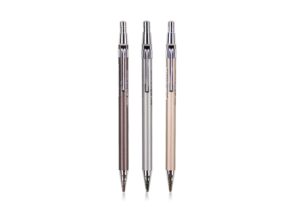Blog
“New Invention: Self-Writing Pencil”
In a world where technology continually evolves, the concept of a self-writing pencil might seem like a figment of science fiction. However, recent advancements have brought this innovative idea to life, combining the simplicity of a traditional pencil with the cutting-edge technology of automated writing. This article explores the fascinating world of the self-writing pencil, its benefits, potential applications, and the future of this groundbreaking invention.
What is a Self-Writing Pencil?
A self-writing pencil is a revolutionary tool designed to automatically write or draw based on pre-set commands or inputs. Unlike conventional pencils that require manual effort to write, this invention uses advanced technology to perform the writing task with minimal human intervention. The pencil is equipped with a small motor, sensors, and a sophisticated algorithm to achieve accurate and consistent writing.
How Does It Work?
Link Domain https://javanet247.com/
The self-writing pencil operates using a combination of mechanical and electronic components. Here’s a breakdown of its functionality:
- Embedded Motor: The core of the self-writing pencil is its miniature motor, which controls the movement of the pencil tip. This motor is responsible for translating digital commands into physical writing actions.
- Sensors and Feedback: Sensors embedded in the pencil track the position and movement of the pencil tip. These sensors provide real-time feedback to ensure that the writing is precise and aligned according to the input commands.
- Algorithmic Control: The pencil is programmed with algorithms that convert digital text or drawing instructions into physical writing. Users can input text or design patterns via a connected device, and the pencil translates these commands into written form on paper.
- Power Source: The pencil is powered by a compact battery or rechargeable power source. This ensures that the pencil can operate for extended periods without frequent recharging.

Benefits of the Self-Writing Pencil
The self-writing pencil offers several advantages over traditional writing tools. Here are some key benefits:
- Precision and Consistency: The self-writing pencil ensures consistent writing quality, eliminating variations in handwriting or drawing. This is particularly useful for tasks that require high precision, such as technical drawings or formal documents.
- Time Efficiency: Automating the writing process saves time and effort. Users can quickly produce written content without the need for manual writing, making it ideal for professionals, students, and creative individuals.
- Customization: The pencil can be programmed to write in various fonts, styles, and sizes. Users can customize the output to suit their preferences or requirements, adding a personal touch to their documents or artwork.
- Ergonomic Design: By reducing the physical effort required for writing, the self-writing pencil minimizes strain on the hand and wrist. This can be beneficial for individuals with repetitive strain injuries or those who write for extended periods.
Potential Applications

The self-writing pencil has a wide range of potential applications across various fields:
- Education: In educational settings, the self-writing pencil can assist students in practicing handwriting, drawing diagrams, or completing assignments. It can also be used by educators to generate printed materials or create custom teaching aids.
- Professional Use: Professionals in fields such as engineering, architecture, and design can benefit from the precision and efficiency of the self-writing pencil. It can be used for drafting technical drawings, creating detailed illustrations, or producing high-quality reports.
- Art and Design: Artists and designers can use the pencil to experiment with new styles, create intricate patterns, or produce reproducible artwork. The ability to customize the writing output allows for greater creative flexibility.
- Accessibility: The self-writing pencil can enhance accessibility for individuals with disabilities that affect manual dexterity. It provides a means for individuals to produce written content independently and with greater ease.
Challenges and Considerations
While the self-writing pencil represents an exciting technological advancement, there are several challenges and considerations to address:
- Cost: The complexity of the self-writing pencil’s technology may result in a higher price point compared to traditional pencils. Cost-effective manufacturing and pricing strategies will be essential for widespread adoption.
- Maintenance: Regular maintenance and calibration of the pencil’s motor and sensors may be required to ensure optimal performance. Users will need to follow manufacturer guidelines for upkeep and troubleshooting.
- Battery Life: The pencil’s battery life will determine its usability and convenience. Advances in battery technology will be crucial for extending operational time and reducing the frequency of recharging.
- User Interface: Designing an intuitive user interface for programming the pencil and inputting commands will be important for ensuring ease of use. The interface should be user-friendly and compatible with various devices.
The Future of the Self-Writing Pencil

As technology continues to advance, the self-writing pencil is likely to see further innovations and improvements. Future developments may include:
- Integration with Digital Devices: Enhanced connectivity with smartphones, tablets, and computers could allow for seamless integration and control of the self-writing pencil. Users may be able to sync their devices and access advanced features.
- Improved Materials and Design: Advances in materials science and design could lead to more durable, lightweight, and ergonomic self-writing pencils. Innovations in design may also enhance the aesthetic appeal of the pencil.
- Expanded Functionality: Future iterations of the self-writing pencil may incorporate additional features such as voice recognition, multi-language support, and advanced customization options.
External link: art.htmlhttps:/jetluxury.techarmz.com/transformed-celebrity-
Conclusion
The self-writing pencil is a remarkable invention that combines the traditional charm of pencil writing with the convenience of modern technology. By offering precision, efficiency, and customization, it opens up new possibilities for a variety of applications. As technology continues to evolve, the self-writing pencil holds promise for further advancements and innovations, making it an exciting development in the world of writing and design.
Whether you’re a student, professional, artist, or simply a tech enthusiast, the self-writing pencil represents a fascinating glimpse into the future of automated writing tools. With its potential benefits and applications, it’s an invention worth watching as it continues to shape the way we create and communicate.

